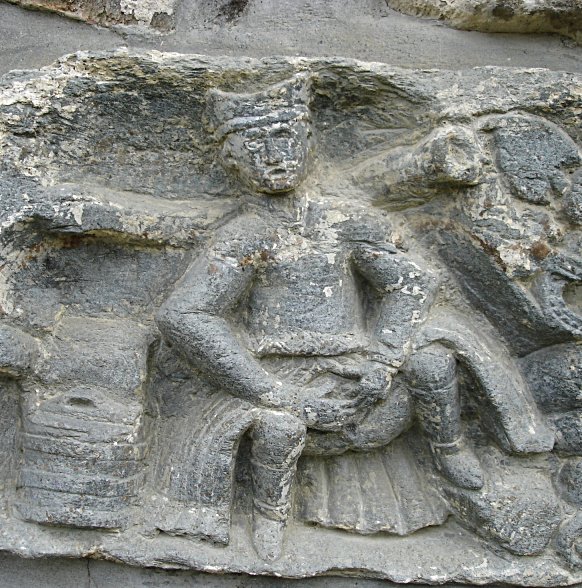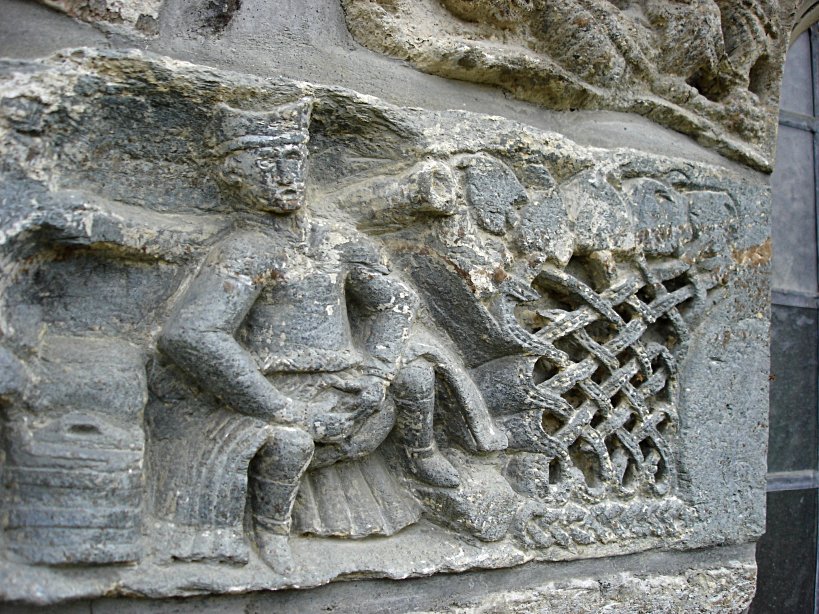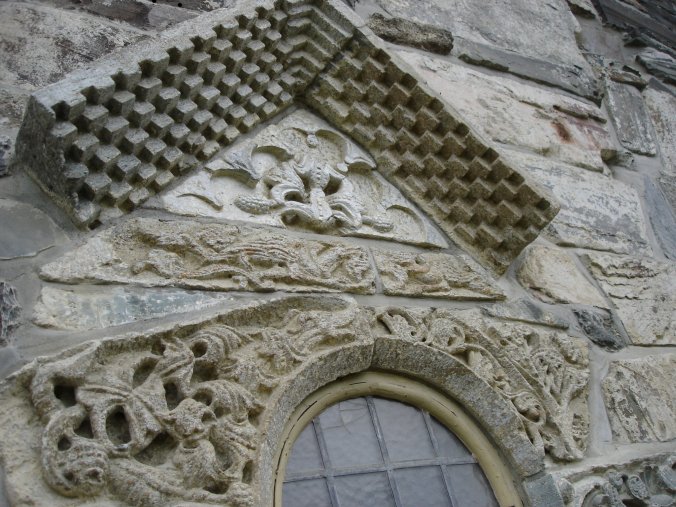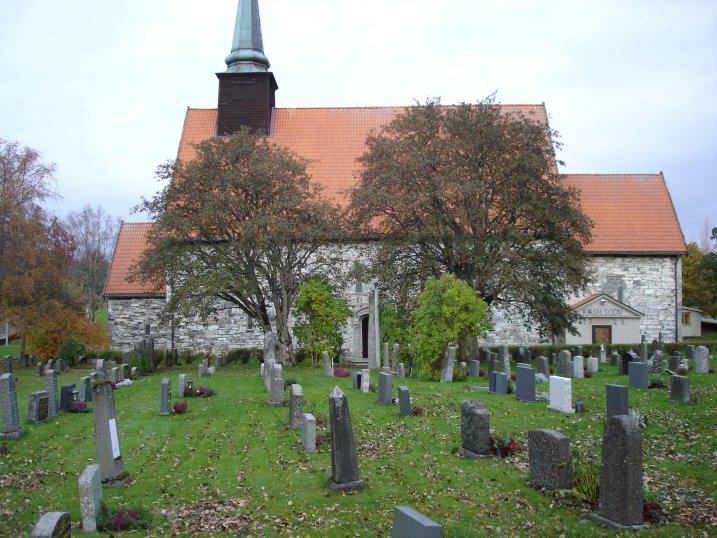Contents

The Figure
If you have any doubts to the international nature of exhibitionist religious carvings then this figure should go some way to persuading you.
This figure lies on the church of St Olaf, at Stiklestad in Trondelag, Norway. It is one of around 20, 12th century stone churches in the area. The exact date of the church’s construction is not known but it is thought to date from around 1180 which fits in well with dates for British exhibitionist figures. The Nidarosdomen cathedral at Trondheim was being built around this time which also carries an alleged female exhibitionist figure on the corbel table. There are many similarities between Lincoln Cathedral in the UK and the Nidarosdomen and it is thought that English masons were employed in its construction. This also seems to apply to the sculptors. A number of elaborate soapstone carvings on smaller churches in the area, carry the same signatures of masons who worked on the Cathedral.
The figure is part of a series of Romanesque fragments which have been reset into the present church wall.
Is this a Sheela?
While the figure is undoubtedly exhibitionist it would be hard to call it female. However it does seem to lack male genitals and there is a distinct hole beneath the hands. The figure is richly attired and the pleated “skirt” would seem to suggest a male along with the boots. (For a similar “skirt” see the warrior figures on the door at Kilpeck. The lack of female attributes would seem to suggest that this may be an anus shower rather than sheela na gig. Saying that another interpretation is that a male figure is being shown with female genitalia suggesting possible satirical element.
Thanks go to Eskil Følstad of the Stiklestad National Culture Centre for supplying the pictures and information on this figure.
St Olaf, The Perpetual King of Norway
King Olaf Haraldsson (Olaf II) was king in Norway between 1015-1030. King Olaf is a good example of the international state of religion and politics during the 11th and 12th centuries. Olaf has strong ties with England as he spent a number of years there fighting the Danes. After being baptised in Rouen he returned to Norway and brought with him bishops from England and Germany. Bishop Grimkell came from England and it was he that eventually organised the beatification of the King.
At his death at the battle of Stiklestad he was more or less fighting his own subjects. His son Magnus the Good ruled Norway after a brief hiatus and its thought that through his efforts the cult of St Olaf was promoted and came to prominence. A number of churches can be found in England and Ireland dedicated to St Olaf (also spelt Olave) especially in area with Norse connections. There are ones in London, York, Dublin and Waterford.
All photos copyright Eskil Følstad, Stiklestad National Culture Centre



